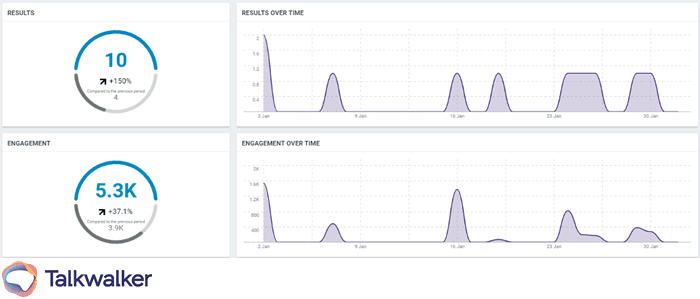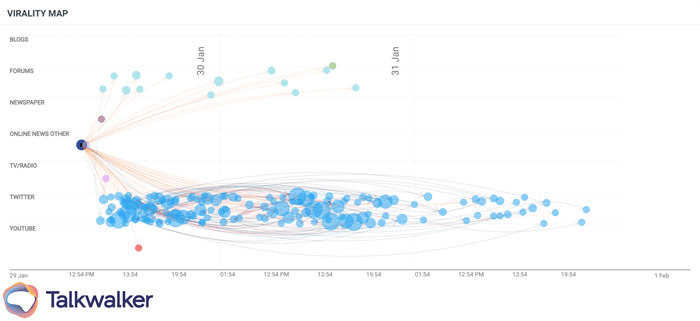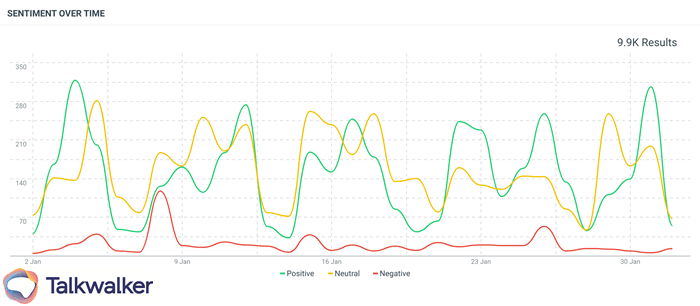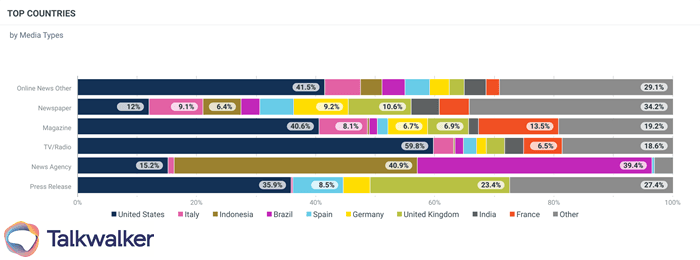Advertising value equivalency: Do AVEs ad value to your PR measuring?
Advertising Value Equivalency (AVE) is an outdated way to measure the impact of PR. Here's why they don’t work, and what alternatives can replace them.
January 31, 2024

Advertising Value Equivalency, AVEs, or Ad Values. Some people even flip the letters and call them EAVs. Whatever you call them, Tom Watson traced their origin back to the 1940s.
They soon became the go-to measurement for the PR industry. The problem is, that in nearly a century, AVEs haven’t adapted to today’s online society.
There are newer and better ways to prove the value of your PR strategy.
Yet, a recent report showed that around 6% of users were still using AVEs to measure impact. It's getting better, but AVEs aren’t dead yet. Why is this the case?
Before we go any deeper, we need to look at what AVEs are.
What is Advertising Value Equivalency?
How to Calculate AVEs
Ad Value Equivalency gave public relations professionals a measurable context in people’s marketing communications, originally comparing them against brand advertising.
Advertising expense is easy to measure, based on the size of your ad and the reach of the medium it is in.
To aid comparison, the AVE solution was to treat PR like advertising content. On a basic level, that meant looking at the scale of the coverage and multiplying it by the advertising rate. That way, you'd know the dollar value of your PR piece.
What does eav mean in advertising?
EAV stands for Equivalent Advertising Value. It’s another way to describe AVEs (Advertising Value Equivalency). It is just as worthless for PR measurement as AVEs, and anyone using EAV should consider some of the KPIs included in the article above.
The AVE Formula
But, it’s not quite so straightforward. The ad equivalency calculator should look like this:
AVE = SIZE X RATE
If your article is 10 column inches long, in a paper whose rate is $15 per column inch, your ave is:
AVE = 10 X 15 = $150 AVE
However, many people will incorporate an extra number into the formula. This is to support the claim that PR communications are more valuable than advertising.
Although that’s widely accepted, you can’t accurately know how much more effective. The variable can vary widely, with examples from 3 up to 12, and everything in between. Looking at the 2 extremes, you could get two different examples:
AVE = 10 X 15 X 3 = $450 AVE
OR
AVE = 10 X 15 X 12 = $1800 AVE
Either result could be correct. But with no evidence to support the accuracy of the added variable, there’s no clear answer to what is right.
To make things more confusing, some alter the variable further to incorporate the source’s credibility too. Another vague metric, and therefore unreliable.
Do AVEs Work?
For PR measurement, AVE’s don’t work. Like Earned media value (EMV) they try to follow a simple formula but include non-formulaic variables. The results rely on too many unsupported numbers.
These are important factors they don’t consider.
Rate
Even though it’s one of the more reliable elements of the formula, there are still some things you should consider about the rate.
Most importantly, where did your rate come from? Most mediums will offer a discount on their advertising rate card for loyal or high-spend clients. Using a discounted advertising rate and then applying the standard rate card rate for PR will make your PR appear incorrectly more effective.
Some rates don’t exist. You can’t often take a full-page ad on a newspaper front page, or in a TV or radio news bulletin. Yet, you could have a PR story within this space.
The Advertising Value Equivalency calculation for this will probably incorporate an inflated rate. Or add an extra variable to represent this, making it difficult to compare it against your advertising costs.
Content
Would you include a competitor’s name in an advertisement, except for comparison? No. Yet, in a news story that could happen, with an article focused more on your competition than yourself.
And the AVE formula just ignores it.
You and your competitor could calculate the same AVE from the same article even if it focused more on one brand. What’s the value of that?
Sentiment
The adage is all news is good news. And though there are plenty of PR Disaster examples that prove it isn’t true, AVEs still think it is.
They don’t take into account the sentiment of an article. It could be a great product review, a company slating, or a neutral commentary. THE Advertising Value Equivalency formula doesn’t measure the difference.
Unless you add another variable. Another unsupported number.
What the PR Industry Thinks of Advertising Value Equivalency
“Advertising Value Equivalent (AVE) is a lousy form of public relations measurement. Practitioners use it because it’s easy. But it’s also wrong.”
Stephen Waddington, (@wadds) Wadds Inc
Considering the credibility of AVEs, they’re frequently criticized in the PR industry. And yet, they’re still a commonly used metric. John Noble raises this in Chartered Public Relations: Lessons from Expert Practitioners.
“The extent to which (AVEs are) criticized by commentators and researchers... is only matched by the extent that the concept is used in practice.”
What Should We Do About AVEs?
A simple way to stop AVEs is to stop using them. They may be quick; your client may love them; they may be what you’ve always used. None of those reasons make them right.
Instead, you should be looking at every PR campaign individually, and actually, use reliable metrics to analyze your results. It may take longer, but there are plenty of PR tools on the market to help you gather a more detailed analysis.
“Return on investment should link the investment in public relations activity to the outcomes that it generates. The objectives of a public relations campaign should be tied as closely as possible to organisational objectives. Defining a measurement framework for a campaign is hard. Just as no two organisations are the same, no two objectives can be the same, and no measurement frameworks for a campaign will be the same.”
Stephen Waddington, (@wadds) Wadds Inc
Before you look at measuring your campaign results, define what outcome you want from it. Then, measure the PR impact.
Alternative ways to measure PR Impact
How much your audience has seen or heard your PR doesn’t impact your PR value. It’s about how much effect it had on them. It doesn’t rely on variables, but actual, real, tangible figures gathered from social media analytics, like...
Traffic Monitoring
You can measure the change in traffic on your website. Look for extra engagement, especially from new traffic, and visitor recency. If your PR works, you should see an increase in new visitors and return traffic.
Don’t forget to measure your social media traffic too. Look for active engagement, where people share or comment on your posts. These people will have taken your message onboard and are helping it diffuse further.

You can monitor social engagement from your campaigns, Talkwalker Media Monitoring
Virality
A Virality Map can show how successful your communications were, by looking at where they shared.

Virality maps help you track where your content is being shared, Talkwalker Media Monitoring
Sentiment
You can measure the emotional impact a campaign has on your audience, with sentiment analysis. This will give you a better idea of whether the PR piece had a positive or negative impact on your brand.

Tracking sentiment over time enables you to see the emotional impact of your campaigns, Talkwalker Media Monitoring
Demographic Reach
With more in-depth analysis, you can gauge more precise demographics of who is engaging with your PR. Therefore, you can measure which markets your campaign is having more impact on.

You can compare mentions by demographics and channels, to find where you're having the most impact, Talkwalker Media Monitoring
Conclusion
Advertising Value Equivalency doesn’t work. It may have been relevant at some stage. But with other metrics available today, it’s time for AVEs to go.
And the end could be nigh, with the Chartered Institute of Public Relations banning CIPR members from using the metric.
Talkwalker is proud to support AMEC's campaign to eradicate the use of AVEs as metrics in public relations work. To support their campaign, click the banner below.

Talkwalker Media Monitoring tools offer a better way to measure your PR value. To learn more about how they can help your brand, click below.
{{cta('92220962529')}}
